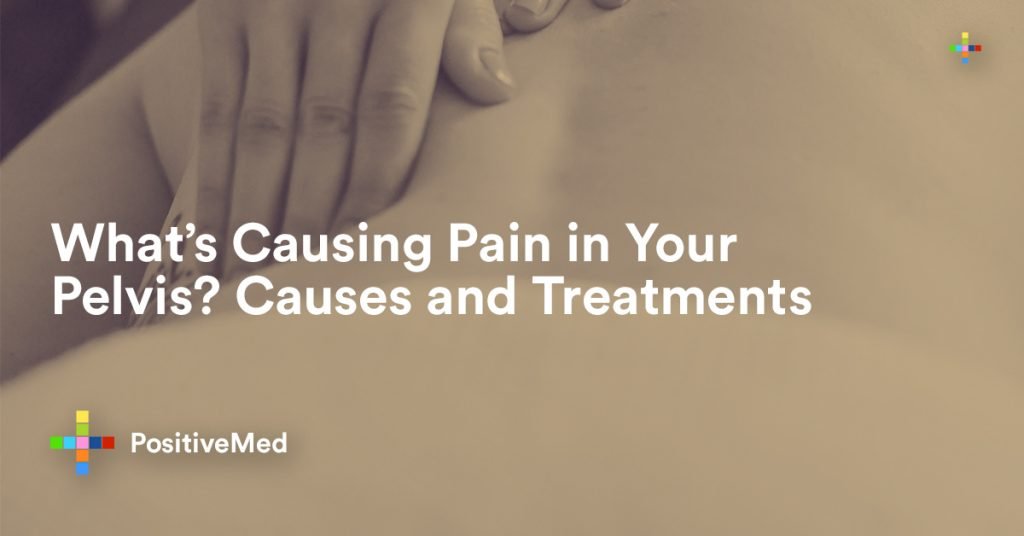The pelvis lies somewhere between the upper part of your thighs and the belly button. Whether you are a man or a woman, you can experience pain in this region of your body. Pain in your pelvis usually occurs if there is a problem with your digestive tract, urinary tract, or reproductive organs.
Although women can experience pelvic pain during menstruation, there is no need to panic. However, it may require seeking medical intervention if the pain becomes serious.
Let’s have a look on possible causes of pelvic pain.

Infection
Urinary tract infection (UTI) can result due to bacteria. Infections can affect your kidneys, bladder, or urethra. UTIs mostly affect women with between 40% and 60% reporting such infections in their lifetime.
STIs
Sexually transmitted infections like Chlamydia and Gonorrhea can cause pelvic pain. People between the ages of 15 and 24 are the most affected by these two STIs. Men usually experience pain in their testicles while it occurs in women when passing urine or during a bowel movement.
Hernia
A hernia happens when a tissue or an organ pushes through weak muscles in your chest, thigh, or abdomen. It creates an achy bulge and may be painful. You can either push the bulge in or let it disappear when you lie down.
Appendicitis
Appendicitis occurs when your appendix becomes
Related Link: Belly Button Facts and What It Says About You
Kidney Stones
This condition occurs when minerals such as uric acid or calcium clump together in your urine. It may form hard rocks sometimes. The condition is more common in men than women. You may not notice any symptoms until the stones start moving.
Cystitis
This is an inflammation caused by an infection of the urinary tract, particularly the bladder. The pain may be accompanied by other symptoms such as strong urge to urinate, burning pain when urinating, blood in the urine, strong-smelling urine, or low-grade fever.
Irritable Bowel Syndrome (IBS)
IBS can manifest as intestinal symptoms such as cramps. It’s usually common in women than men. IBS abdominal pain usually improves after a bowel movement. Other symptoms associated with IBS include diarrhea, bloating, gas, constipation, and mucus in the stool.
Pudendal nerve entrapment
The nerve that supplies feelings to your anus, genitals, and urethra is known as pudendal. You can experience pain after an injury, surgery or when a growth puts pressure on this nerve. The pain can feel like an electric shock around the genitals or the surrounding region. The pain becomes worse when you are seated and improves while standing.
Adhesions
Adhesions occur when scar-like tissues in your abdomen stick together. It
Pelvic Pain in Women
There are some causes of pelvic pain that only women experience. They include:
Mittleschmerz
Also known as “middle pain,” this condition usually causes pain in the pelvis and lower belly in some women when ovulating. The pain that lasts for a few minutes to hours occurs on the side where the egg is released. It is good to inform your doctor if it becomes serious or accompanied by other symptoms like nausea and vomiting.
Menstrual Cramps and Premenstrual Syndrome
The majority of women experience cramps prior and during their monthly period. The discomfort is triggered by hormonal changes and contraction of the uterus. The cramps are normally mild but can become serious sometimes. Other symptoms that can accompany cramps include nausea, vomiting, bloating, fatigue, food cravings, moodiness, and headaches.
Miscarriage
This is the loss of a baby before the 20th week of pregnancy. A miscarriage can trigger severe pain or cramp in your belly. It can be accompanied by bleeding.
Ectopic Pregnancy
This is a condition where a fertilized gee grows outside the uterus, particularly along the fallopian tube. It can be life threatening if it bursts the fallopian tube.
Pelvic Inflammatory Disease (PID)
PID occurs when the reproductive tract of a woman becomes infected with bacteria. The infection starts from the vagina and spreads toward the fallopian tube, ovaries and other organs.
Ovarian Cyst Rapture
Cysts are sacs filled with fluids that usually form in your ovaries. Although most women get cysts, they don’t recognize any symptoms. Nevertheless, you can experience abdominal pain if a cyst bursts or twists.
Other Causes of Pelvic Pain in Women
Uterine fibroids: Growths on the uterine wall.
Endometriosis: Occurs when tissue outside your uterus tries to shed every month.
Pelvic congestion syndrome: Thick ropy varicose veins form around the ovaries.
Pelvic relapse: Weakening of the muscles that support the uterus, especially in older women.
Other Causes of pelvic Pain in Men
Bacterial prostatitis: Swelling and inflammation of the prostrate gland.
Chronic Pelvic pain syndrome: A long-term pelvic pain without infection.
Urethral stricture: Blockage or narrowing of the urethra due to injury, swelling, or infection.
Benign prostatic hyperplasia: noncancerous expansion of the prostrate gland.
Post-vasectomy pain syndrome: Testicular pain for more than 3 months after surgery
When to Seek Medical Assistance
There is nothing to worry about if your pelvic pain is mild or temporarily. However, contact your doctor immediately if the pain doesn’t disappear in one week. Also, seek medical help if you are accompanied by these symptoms:
Traces of blood in urine
Trouble when urinating
Chills
Fever
Foul-smelling urine
Difficulties during
Bleeding between monthly periods.
6 EXERCISES TO RELIEVE MALE PELVIC PAIN






